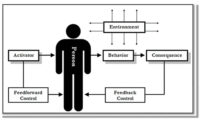Behavior-based coaching is essential for any mission to keep people safe. It’s human nature to get distracted or complacent on the job, and to deviate from performing the prescribed safe operating procedure (SOP). Plus, it’s easy for workers to overlook a safety hazard, especially when they are focused on a job challenge and in the flow of self-directed goal achievement. Systematic behavior-based observing and coaching from a peer can be invaluable to prevent personal injury. This is the primary mission of behavior-based safety (BBS).
The success of BBS hinges on implementing an effective behavioral-observation-and-feedback (BOF) process. The critical behavioral checklist (CBC) is an essential tool for a successful BOF session. As most readers know, a CBC is developed and customized from group meetings with a work team selected to define the safe and at-risk behaviors relevant to performing their jobs safely.
Given the diversity of jobs at a worksite, an effective CBC varies dramatically across work teams, and it needs to be altered over time as jobs change and workers take on different assignments. When a particular behavior reaches 90 percent safe or better, it’s advisable to substitute another behavior for that behavior. And when the percent-safe scores for certain behaviors vary substantially across the same CBC of a work team, a lack of inter-observer reliability is indicated, suggesting a possible misunderstanding of a given SOP and/or a need for consensus training on the definitions of the safe and at-risk behaviors of a CBC.
Applying the critical behavior checklist
The percent-safe scores from plant-wide application of a BOF process provide a leading indicator of the relative safety (or injury potential) across job sites. Plus, a content analysis of the written commentary from the “comment column” of a CBC might suggest a number of proactive adjustments to make–from the removal of safety hazards and barriers that influence workers to take at-risk shortcuts to altering a policy or management system that motivates the occurrence of certain at-risk behavior (for efficiency) over safe behavior (for effectiveness). And the percent-safe scores from a CBC indicate certain work behaviors to target for special attention by BOF participants and SOP trainers.
BBS coaching
Too few organizations use the CBC to deliver one-to-one behavioral feedback to the workers observed. In fact, coaching is often omitted entirely, making BBS far less successful than it could be at injury prevention. It takes relevant training, commitment, and courage to conduct an effective one-to-one feedback process. Plus, some organizations lack the interdependent brother’s/sister’s keeper culture needed to facilitate and support a BBS coaching process.
Let’s consider how the CBC can be used to expand a behavioral feedback discussion beyond the identification of safe behaviors to support and at-risk behaviors to correct.
Exposure, Severity, and Probability (ESP)
Exposure, Severity, and Probability can be used to estimate behavioral risk and select the behaviors for a CBC. Exposure fluctuates according to the frequency and duration of an at-risk behavior from all employees at a worksite. For example, the longer a worker refrains from using personal protective equipment (PPE), the greater the exposure.
Severity refers to the degree of possible harm or injury that could occur from an at-risk behavior.
Probability -- risk probabilities that a certain behavior will result in an injury -- is the most difficult to estimate. Still, considering the probability of an injury following the occurrence of various at-risk behaviors is a useful topic for a BBS coaching session.
Behavioral convenience
Along with discussing the ESP of an at-risk behavior, it’s useful to identify safe behaviors that are extremely inconvenient to perform. This could activate constructive dialogue about environmental barriers or engineering constraints that ought to be altered or removed to make safe behavior more convenient. Ask people to assign safe and at-risk behaviors a “behavioral-convenience index” from 1 to 10, with “1” representing “most easy” and “10” reflecting “most difficult” to perform.
Subjective evaluations of behavioral convenience can facilitate engaging and informative discussions when deriving a CBC, and when coaching a peer after a BOF session. The gap between the convenience scores of various safe behaviors and their at-risk counterparts indicates the degree of intervention effort needed to influence safe work behavior.
Injury protection vs. injury prevention
Categorizing safe behavior as protective versus preventive is enlightening and instructive because of “risk compensation.” It has been shown empirically that some people take more risks when they feel protected. Vehicle drivers were found to drive faster when they were buckled up with a combination shoulder-and-seatbelt than when unbuckled. And football players increase their risk-taking behavior on the field when suited up with protective gear. Question: If a job is made safer with machine guards or the use of PPE, will workers reduce their perception of risk and perform more at-risk behavior?
Researchers of risk compensation, termed “risk homeostasis” by some, conclude that safety cannot be achieved through training, engineering, or enforcement. Why? Because compliance with an injury-protective behavior will influence a decrease in the related injury-preventive behavior. It’s assumed that people have a personal level of risk they are willing to endure, and improving protection increases their risk-taking behavior until that level of acceptable risk is reached.
Professor Gerald Wilde, the originator of the theory of risk homeostasis, advocates that safety interventions must reduce the level of risk people are willing to take, and he emphasizes value-change over behavior-change. This implies talking about safety as a core value rather than a changeable priority. This notion, along with the evidence of risk compensation, should certainly influence interpretations and discussions of CBC results, as well as BBS coaching.
Conclusion
This brief article provides an overview of the essence of BBS, with particular attention to applications of a CBC. I hope readers consider the following four summary points:
- The interpersonal coaching component of BBS is essential for optimal injury prevention, but this process is missing from many BBS implementations;
- The analysis of data collected through the CBC to identify trends and guide the development of system-level improvements is essential for optimal injury prevention;
- Many applications of BBS do not strategically and continuously refine CBCs; and
- When creating and applying a CBC, estimate:
- the injury exposure, severity, and probability of targeted at-risk behaviors;
- the convenience of safe versus at-risk behaviors; and
- the difference between injury-protective versus injury-preventive behavior -- presenting evidence of risk compensation.



